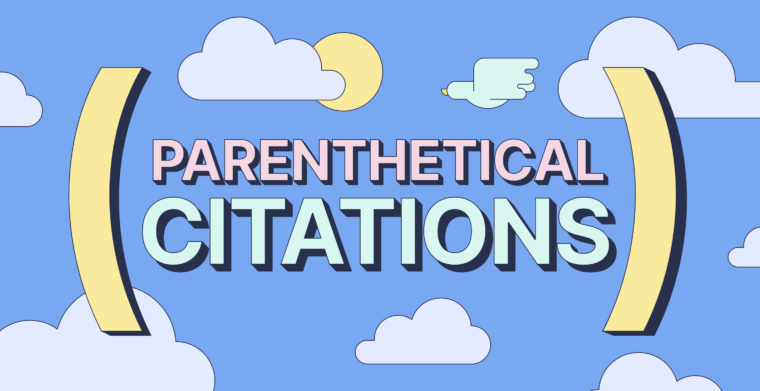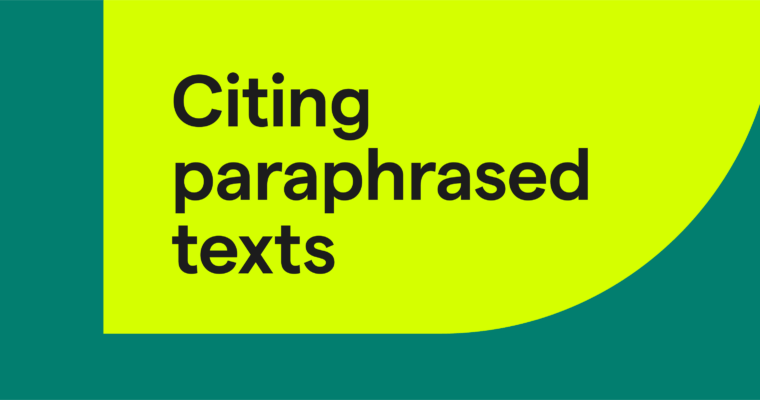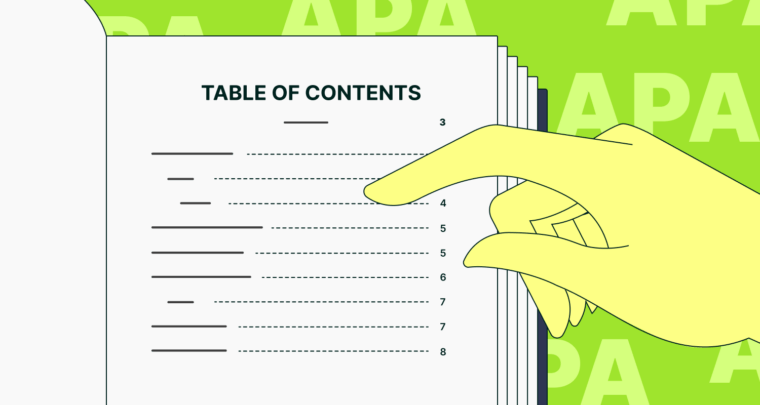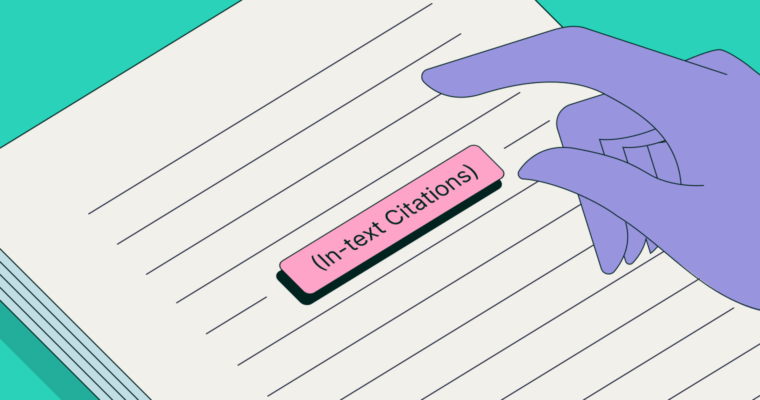
Parenthetical citations are in-text citations set within parentheses that summarize source details, such as the author’s last name, year of publication, or relevant page numbers. Unlike full citations in a works cited page, parenthetical citations are quick and minimal, so they don’t disrupt reading.
Citing sources is necessary for academic writing, which often makes parenthetical citations a requirement. The good news is they’re simple once you know how they work. Below, we explain how to write parenthetical citations in the Chicago, APA, and MLA formats, along with some other need-to-know basics.
What is a parenthetical citation?
Parenthetical citations are any citations set in parentheses (like this). In academic writing, they’re used to share a source’s details directly in the text, so the reader doesn’t have to go to the footnotes or works cited page to find the original work.
Because parenthetical citations lie in the text, they’re intentionally short to avoid distracting the reader. Each style guide has its own requirements, but in general, parenthetical citations contain details such as these:
- the author’s last name
- the page numbers for the reference
- the year of publication
The formatting and content of each citation vary, depending on the requirements of the style guide. We explain each style’s preferences below, but to save time, you can also use a citation generator or other citation tools. For example, our Grammarly auto-citations feature corrects parenthetical citations with a quick click, or it creates originals from compatible website sources.
When should you use an in-text parenthetical citation?
In-text parenthetical citations are a requirement if you’re using the APA or MLA formats.
If you’re using Chicago, you have a choice between parenthetical citations (the “author-date” format) and the notes format, which uses footnotes and endnotes. According to Chicago, parenthetical citations are preferred for the sciences, including the social sciences, whereas notes are better for topics relating to history, literature, or the arts.
You need a parenthetical citation for each new idea in your paper that’s not your own. Often, paragraphs will have three or four parenthetical citations (or more), one after each sentence—that’s completely normal. Sometimes you’ll even have multiple parenthetical citations in the same sentence.
Parenthetical citations are needed not only for direct quotes but also for paraphrasing. Additionally, even if you use parenthetical citations, you still need to list full citations in a bibliography section, such as a references list or works cited page.
What’s the difference between parenthetical citations and narrative citations?
In narrative citations, you mention the source author, work, or page number directly in the text:
As Freud (1930) put it, “under the pressure [. . .] of suffering, men are accustomed to moderate their claims to happiness.”
Because the author’s name is mentioned, it’s redundant to mention it a second time in the parenthetical citation.
However, in our example, the year of publication was not mentioned in the text, so an abridged parenthetical citation is needed to fill in the missing information. Typically, narrative citations still use parenthetical citations for a year or page number, depending on the style guide.
In short, narrative citations still incorporate partial parenthetical citations. In these cases, the parenthetical citation mentions only what information is not in the text, instead of all the details.
Chicago parenthetical citation
In the Chicago style, in-text parenthetical citations are optional. They’re required only if you choose to use the author-date system of citations instead of the notes system.
The Chicago style’s format for parenthetical citations is to list the author’s last name and the year of publication in parentheses, with no other punctuation. If you’re referring to a specific passage, you can also add page numbers (or a time stamp for other media), separated by a comma.
(Last Name Year)
(Last Name Year, Page No.)
If the parenthetical citation comes at the end of a sentence in quotation marks, forgo the period in quotes. Place the citation outside the quotation marks with the period following it.
For sources with two or three authors, you can include all their names using the word and (for three authors, use commas as well). For sources with four or more authors, use only the last name of the first listed author, followed by et al.
If the main author of a source is an editor or translator, use only their name without abbreviations like ed. For sources with no listed author, use a short form of the title.
All sources must have a corresponding full citation in the references list (similar to a works cited page) at the end of the work.
Chicago parenthetical citation example
There is no evidence to suggest there is currently life on Mars (Thompson 2018).
Even though the tests were conclusive (Richardson, Hacker, and Backhurst 2002, 76–77), research continues to this day.
According to Pratchett, “[Ambition] was something that happened to other people” (1989, 62).
APA parenthetical citation
In-text parenthetical citations are required for the APA format. Just like Chicago, the APA format uses an author-date style, although the author and year of publication are separated by a comma. Locations to specific passages are also used when applicable, with a comma and the appropriate abbreviation: p. for page, pp. for pages, and paras. for paragraphs.
(Last Name, Year)
(Last Name, Year, pp. No.)
One or two authors can be listed using an ampersand (&), but three or more authors use et al. after the first listed author. If no author is listed, use the title instead.
Just like Chicago, if the parenthetical citation comes at the end of a sentence in quotation marks, the citation goes outside the quotes, followed by the period.
Again, all sources must have a corresponding full citation in the references list.
APA parenthetical citation example
There is no evidence to suggest there is currently life on Mars (Thompson, 2018).
Even though the tests were conclusive (Richardson et al., 2002, pp. 76–77), research continues to this day.
According to Pratchett, “[Ambition] was something that happened to other people” (1989, p. 62).
MLA parenthetical citation
The MLA format also prefers in-text parenthetical citations, like the APA format. However, unlike the previous two style guides, MLA does not require the publication year. Only the author’s last name is necessary, although page numbers and other locations are also recommended if applicable, without a comma.
(Last Name)
(Last Name Page No.)
Abbreviations are not necessary for page numbers, but use them for chapters (ch.) and scenes (sc.).
For sources with two authors, list both names connected with the word and. For sources with three or more authors, use only the first listed author’s name and et al. Sources with no listed authors use the title instead, shortened to the first noun phrase—i.e., Faulkner’s Novels of the South becomes Faulkner’s Novels.
Again, place parenthetical citations outside the quotation marks, followed by the period.
As always, all sources must have a corresponding full citation in the works cited page.
MLA parenthetical citation example
There is no evidence to suggest there is currently life on Mars (Thompson).
Even though the tests were conclusive (Richardson et al. 76–77), research continues to this day.
According to Pratchett, “[Ambition] was something that happened to other people” (62).
Parenthetical citation FAQs
What are parenthetical citations?
Parenthetical citations are in-text citations set within parentheses that summarize source details, such as the author’s last name, year of publication, or relevant page numbers. Unlike full citations in a works cited page, parenthetical citations are quick and minimal, so they don’t disrupt reading.
When should parenthetical citations be used?
In-text parenthetical citations come at the end of each new idea that’s not your own. The APA and MLA formats use parenthetical citations as the main method for referencing sources. In the Chicago style, they are optional.
What’s the difference between parenthetical citations and narrative citations?
In narrative citations, you mention the author directly in the text—for example, “As Einstein himself once said . . .” Narrative citations still require a shortened form of parenthetical citations, but there’s no need to mention the author’s name twice.





